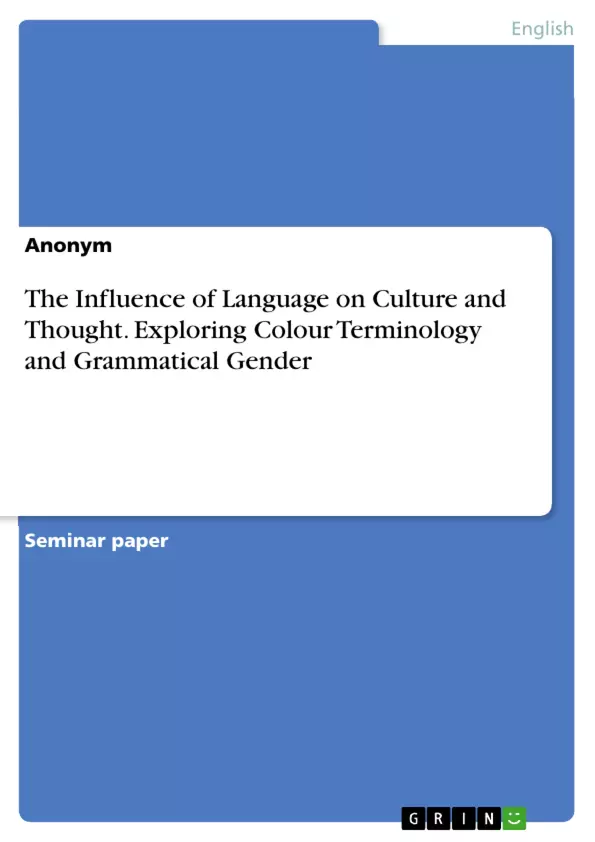This research delves into the relationship between language, culture, and thought, focusing on the Sapir-Whorf hypothesis. It examines how language influences our perception of the world through the lens of colour terminology and grammatical gender. While differences in colour categorization across languages initially suggest varied perceptions, empirical evidence indicates that human vision remains constant worldwide. However, colour terminology reflects cultural concepts, highlighting the limits of linguistic comparability. Additionally, the influence of grammatical gender on perception underscores language's conditioning effect on thought. Generic usage in language contributes to reinforcing certain associations, shaping individuals' understanding of the world. Although the paper does not address linguistic dominance by one gender, it acknowledges its relevance in understanding stereotypes. Moreover, it suggests expanding the discussion of grammatical gender to encompass issues of prejudices and racism stemming from misconceptions.
Table of Contents
- Introduction
- Main Part
- The Challenge of Translation
- The Sapir-Whorf hypothesis
- Language Categorization: The Colour System
- Language Categorization: Gender in Grammar
- Conclusion
Objectives and Key Themes
This research paper aims to investigate the relationship between language and thought, specifically how the limits of language impact our understanding of the world. The paper focuses on the challenges of translation and explores the Sapir-Whorf hypothesis, examining how different linguistic classifications influence our perception of reality.
- The influence of language on thought and cultural understanding.
- The challenges of translating meaning across different language systems.
- The Sapir-Whorf hypothesis and its implications for understanding the relationship between language and thought.
- The role of language categorization in shaping our perception of concepts like color and gender.
- The impact of grammatical gender on cultural stereotypes and biases.
Chapter Summaries
- Introduction: This chapter introduces the concept of the limits of language and how they pose challenges for translation. It raises the question of whether these limits restrict our worldview and highlights the diverse linguistic classification systems that exist across languages. The chapter also introduces the Sapir-Whorf hypothesis and its relevance to the study of language and thought.
- The Challenge of Translation: This chapter delves into the difficulties translators face when attempting to convey meaning accurately across language barriers. It examines how each language is a unique system with its own codes and signs, and how these differences can lead to significant variations in interpretation. The chapter also explores the concept of conceptual language systems and how they shape our understanding of the world.
- The Sapir-Whorf hypothesis: This chapter provides an overview of the Sapir-Whorf hypothesis, which posits that our native language influences or even determines our thoughts. It examines the contributions of Franz Boas and Edward Sapir, focusing on their perspectives on the relationship between language, thought, and culture.
Keywords
The key terms and concepts explored in this paper include: language, translation, Sapir-Whorf hypothesis, linguistic classification, worldview, cultural understanding, color terminology, grammatical gender, stereotypes, biases, conceptual language systems, translation challenges, and cultural codes.
- Quote paper
- Anonym (Author), 2018, The Influence of Language on Culture and Thought. Exploring Colour Terminology and Grammatical Gender, Munich, GRIN Verlag, https://www.hausarbeiten.de/document/1453717


